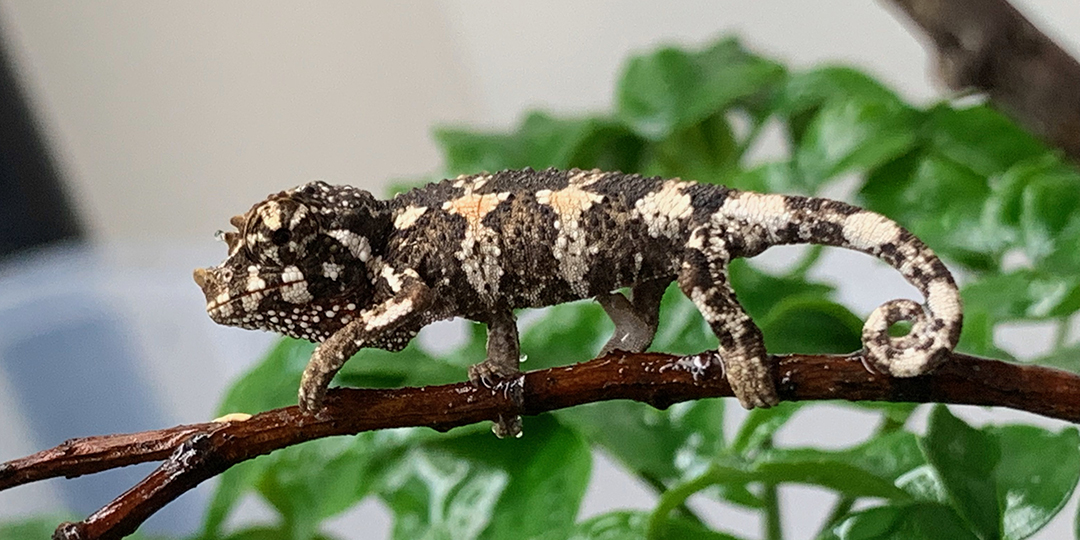
Baby Jackson’s Chameleon Care: A Comprehensive Guide
Introduction
Jackson’s chameleons (Trioceros jacksonii) are captivating reptiles native to the rainforests of East Africa. Their vibrant colors, prehensile tails, and inquisitive nature make them popular pets among reptile enthusiasts. However, baby Jackson’s chameleons require specialized care to thrive in captivity. This comprehensive guide will provide you with all the essential information you need to ensure the well-being of your baby Jackson’s chameleon.
Enclosure Requirements
Size: Baby Jackson’s chameleons require a spacious enclosure that allows them to climb, explore, and bask. A mesh enclosure measuring at least 18 inches long, 18 inches wide, and 24 inches tall is suitable for a single baby chameleon.
Substrate: The substrate, or floor covering, should provide good drainage and support the chameleon’s feet. Suitable substrates include coconut fiber, orchid bark, or a mix of both. Avoid using sand or gravel, as they can cause impaction.
Temperature and Humidity: Jackson’s chameleons are ectothermic, meaning they rely on external heat sources to regulate their body temperature. Provide a temperature gradient within the enclosure, with a basking spot of 85-90°F (29-32°C) and a cooler area of 75-80°F (24-27°C). Maintain a humidity level of 60-80% by misting the enclosure several times a day.
Lighting: Baby Jackson’s chameleons require both UVB and UVA lighting. UVB light is essential for calcium absorption and bone development, while UVA light helps regulate their circadian rhythm. Use a 5.0-10.0 UVB bulb and a separate UVA bulb, ensuring they overlap in the basking area. Provide 12-14 hours of light per day.
Ventilation: Proper ventilation is crucial to prevent respiratory problems. Ensure the enclosure has adequate airflow by providing mesh panels or vents. Avoid placing the enclosure in direct sunlight or near drafts.
Diet
Live Insects: Baby Jackson’s chameleons are insectivores and require a diet consisting primarily of live insects. Suitable prey items include crickets, dubia roaches, mealworms, and waxworms. Dust insects with a calcium and vitamin D3 supplement twice a week.
Frequency: Feed baby chameleons small insects daily, offering as many as they can consume in 10-15 minutes. As they grow, gradually increase the size and frequency of feedings.
Supplements: In addition to a calcium and vitamin D3 supplement, provide a multivitamin supplement once a week. Follow the manufacturer’s instructions for dosage.
Water
Hydration: Baby Jackson’s chameleons are prone to dehydration, so it’s essential to provide them with access to fresh water at all times. Use a drip system or a shallow water dish that they can easily access.
Misting: Mist the enclosure several times a day to increase humidity and provide water droplets for the chameleon to drink.
Handling
Frequency: Handle baby Jackson’s chameleons as little as possible, as they are easily stressed. Limit handling to necessary tasks, such as feeding, cleaning, or veterinary appointments.
Technique: When handling, support the chameleon’s body and tail. Avoid grabbing them by the head or tail. Allow them to crawl onto your hand or a perch.
Signs of Stress: If a baby Jackson’s chameleon exhibits signs of stress, such as gaping, hissing, or darkening in color, return it to its enclosure immediately.
Health
Common Health Issues: Baby Jackson’s chameleons are susceptible to various health issues, including respiratory infections, metabolic bone disease, and parasites. Regular veterinary checkups are essential for early detection and treatment.
Signs of Illness: Monitor your baby chameleon for any changes in behavior, appetite, or appearance. Contact a veterinarian immediately if you notice any signs of illness, such as lethargy, discharge from the eyes or nose, or difficulty breathing.
Conclusion
Providing proper care for a baby Jackson’s chameleon requires a commitment to meeting its specific needs. By following the guidelines outlined in this comprehensive guide, you can ensure the well-being and longevity of your captivating companion. Remember to consult with a qualified veterinarian for personalized advice and regular checkups to maintain your baby chameleon’s health and happiness.
